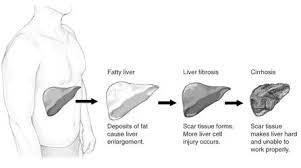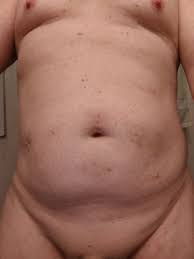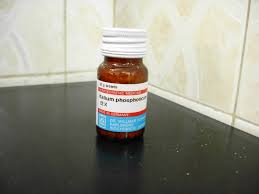Kali Bichromicum, Kali Carbonicum and Kali Hydriodicum
By Wallace McGeorge, M.D., of Camden.

In the paper read before this Society two years ago I gave some indications for the use of Kali muriaticum, Kali phosphoricum and Kali Sulphuricum, three of the tissue remedies. Today, by request, I call your attention to three other of the potash remedies, Kali bichromicum, Kali carbonicum and Kali hydriodicum.
KALI BICHROMICUM – was introduced into our Materia Medica in 1845, but the first proving of it was published by Dr. Arneth in 1847. Dr. Drysdale issued another proving in 1852, but in the first number of the Hahnemannian Monthly, published in August, 1865, Dr. Ad. Lippe gave the best and fullest account of this drug, accessible at that time, and calls attention to many of the symptoms peculiar to this remedy.
When shall we use Kali bichromucum? The principal use of this remedy is in diseases of the mucous membranes. In catarrhal affections of the nose and throat; in ozena, with or without the green clinkers, or plugs, it is par excellence. It is good in certain forms of indigestion, particularly in those cases where the patient feels worse from twenty to thirty minutes after eating.
In bronchial coughs, when the most pain is at the bifurcation of the bronchia, or when a cough is brought on by pressure at this spot, Kali bichromicum gives prompt relief. One characteristic symptom of this remedy is that discharges from the nose, mouth, larynx or vagina are ropy and stringy sometimes the expectoration is pulled out in strings, reaching down nearly to the feet.
In proctitis, especially in painful cases, Kali bichromicum works finely. Sometimes in these cases there is a sensation of a plug in the anus, similar to Lochesis. In blennorrhoea from the rectum, Kali bichromicum gave considerable relief.
This was in the case of one of our noted authors who died in 1884. He was an elderly man, gentle, refined, a widower, who lived alone after his children had married and gone to homes of their own. For some time he had one peculiar, disagreeable symptom. After he went to bed and fell asleep he would wake up, feeling a gush of water from his rectum, but there was no pain, nor distress, accompanying this flow. For his own comfort he usually placed a napkin or handkerchief to catch this discharge. When it dried no odor or stain or mark of any kind was left to indicate the nature of the flow. When one of these napkins was given to me for examination I could hardly believe my own eyes, or nose, or touch, so perfectly had the flow dried kali bichromicum, which had been given him for his other symptoms, covered this one, too, for in a few days this rectal flow entirely ceased.
In coccyodynia or neuralgia of the coccygeal region, when the coccyx is pushed backward, or continues in a relaxed condition too long; when the patient cannot sit down comfortably because the backbone is too long, as she expresses it, Kali bichromicum 30th or 200th gives great relief.
In stinking ulcers of nose and throat; in cases where the nasal bones are eaten away in syphilis, kali bichromicum will often-times stay this bothersome disease and restore the patient to comparative health. In pharyngeal ulcers, which are deep seated; in naso-pharyngeal troubles, where the septum is partiallyeaten away, Kali bichromicum will avert the destructive process and partially heal the diseased parts. To get the best results in these desperate cases, always use high potencies.
In the epidemic of influenza among the horses in 1872, called the epizooty, Kali bichromicum worked wonders. We were advised to use the first decimal trituration and that was the form we used and with gratifying success. If I had used a higher potency, the poor, sick horses would have recovered sooner, for in my after experience in veterinary work among my patients I found the high potencies cured them quicker.
KALI CARBONICUM – is the oldest of the potash group in our Materia Medica, having been proved by Hahnemann, Gersdorff. Goullon, Hartlaub and Rummel. Hahnemann classes it among the anti-psorics, and in his Chronic Diseases, Volume IV., Devotes fifty-five pages to its elucidation.
In my experience Kali carbonicum is good, very good, for stitches. In fact, it is the stitch remedy. Stitches run through nearly every part of the body. In stitches of the eyes and ears it comforts many suffering people. Stitches in region of the liver, sharp stitches and clawing stitches; stitches under the calvicle and stitches under the last rib. Stitches in the mamme in region of the heart, in both kidneys, in the rectum, and transversely through the pudendum.
This does not cover all the stitches under this drug. It has a stitch from apex of left scapula to pit of stomach; stitches in the arm and forearm, in the wrist joints and fingers; stitches in the tibia, in the foot, in the dorsum of foot, in tendons of right foot, and stitches in feet after a walk.
Stitches are characteristic of Kali carbonicum. There are stitches in the joints and tendons; stitches in right or left side at night; violent stitches in left side of chest, in the region of there heart, sometimes extending to the back. These stitches are so severe they almost hinder breathing. We find them in either side of the chest, also during expiration of the breath. It has pulsative stitches in left side of the chest and pressure in region of both kidneys.
Kali carbonicum is particularly useful in kidney and uterine affections. My first experience with Kali carb. was in November, 1867. That was my last year in college and professor Guernsey had sent me up to Norris town to attend to the pravtice of Doctor Preston, while he was away on his wedding tour. I saw more patients in that ten days then I ever expected to see again in the same length of time. One case he left in my care was an Irish woman, who had aborted and was in a deplorable condition. The doctor said he hated to leave me with so bad a case. I hated it, too. She lived in a stone house and it was hard to keep her bed-room warm. She was following a nasty, offensive lochia, and she had so much pain she would scream out in her suffering. As she was so bad, I continued faithfully to carry out Doctor P’.s directions, and did not change her medicien. On my third visit I found her much worse, her neighbors sitting around to see her die. Then I got a move on.
Professor Guernsey had been giving. us his keynotes and I remembered what he taught about Kali carbonicum: “Distressing, cutting, shooting, darting and stitching pains all over the abdomen; the more completely the stitching pains seem to predominate the more certainly will Kali carbonicum be the remedy.” After a careful examination I decided Kali carb. was her remedy. Fortunately I had some of Fincke’s 4000th potency with me and I gave it to her in water every hour she was awake. When I called next day I was relieved to find no crape on the door. I went in and found her sleeping. The woman who sat up with her said she began to get easy after the foutth dose and had slept well the latter part of the right. I continued the remedy. From that time she improved repidly, and she was grateful to me because my medicine had taken away her pain. Before Dr. P. returned she was well enough to sit up. When he came back the first question he asked me was what day Mrs._____ died? When I told him of her improvement, he scarcely believed me, so I insisted on his seeing her before I gave up the case. After he saw her he wanted some of my Kali carb. 4000. I had gotten mine from Dr. Guernsey and told him where to go if he wanted the same preparation.
Singularly enough, four years later, when one of the founders of this society had Bright’s disease so badly that he gave up practice for a time, some of Finck’s Kali carb., 4000th potency, put him on his feet, and he lived to practice his profession seventeen years longer. In his case the bagginess of the eyebrows, the aggravation at 3 A.M. and the frequent calls to urinate at night led me to prescribe Kali carbonicum. Do you wonder that I have had a good feeling for this remedy ever since?
In looking over my patients, if I see a swelling over one or both eyes, it invariably suggests Kali carb. It is generally described as a swell in between the eyebrows and eyelids, that fills up when coughing, or making any unusual effort. I have found this symptom present oftener in nephritic troubles than any other. Whenever I see that symptom I always examine the kidneys. When with the “little bag over the eyes” I feel a puffiness or swelling around the ankles, I know that both the heart and kidneys are affected and the first remedy I study up is Kali carbonicum. If with these two objective symptoms present I find the patient has to rise often at night to urinate, I seek no further, for Kali carbonicum will relieve promptly the urinary difficulty; in a little longer time it will tone up the heart and later on the puffiness or swelling around the ankles will disappear.
In cerebral troubles, when the patient wakes up every morning at 3 o’clock, Kali carbonicum is helpful.
In typhoid fever, when the patient’s abdomen becomes hard or tympanitic, with or without the stitching pains, Kali carb. will often-relieve this distressing and dangerous condition and lead the way to complete recovery.
KALI HYDRIODICUM – is a very useful remedy when indicated, but, unfortunately, it is empirically used by many physicians in massive doses and fearfully abused by scores of practitioners, who give it any old way for almost everything. If a syphilitic taint is suspected, K. I. is given on general principles. It is surprising how many patients need K. I. among the specialists. While listening to this paper don’t think of Kali hydriodicum as K. I. given in five or ten grain doses, but as the properly selected remedy, administered in the 12th, 30th, 200th or 40,000th potency. As a rule, the higher it is given, the longer good effects will follow its exhibition.
Kali hydriodicum will relieve excruciating pains in the head from gummata, but will not cure this horrid disease. Yet Farrington in his lectures said “when gummatous tumors involve the nervous tissues, Iodide of Potassium is your only hope.” No wonder these distressing cases are hopeless.
The characteristic color of the discharge of Kali hydriodicum is green. Kent says there is “green discharge of muco-pus from the nose, from the eyes, from, from the ears, thick copious green expectoration; thick, greenish leucorrhoea; green discharge from ulcers.” These thick green or yellowish green discharges are sometimes very fetid. In gonorrhoea or urethritis the discharge is thick and green, or greenish yellow, without pain.
In catarrhal laryngitis or bronchitis the expectoration is greenish. In phthisis pituitosa, the expectoration is greenish and purulent. In edema pulmonum, the expectoration is like green soapsuds. As a rule, the expectoration of Kali hydriodicum is nauseous to the taste and offensive to the smell of the afflicted patient.
In syphilitic cases, when the patient has been mercurialized, or improperly treated, and when the disease has run a rapid course, eating away the bones of the nose, Kali hydriodicum will some times check this bony destruction. In severe sore throat, with intense headache – not a specific type, Kali hydriodicum works wonders, when given in the higher potencies.
Kali hydriodicum and Marcurius solubilis are two of our best glandular remedies and they have many symptoms in common. The indentation of the teeth on the edges of the tongue is just as marked under Kali hydriodium as in mercurius. Either remedy follows well after the other. Both are wonderful alternatives, and both remedies have long lasting action on nearly all the glands of the body.
In patients who have been mercurialized to excess, Hepar sulphur, and Kali hydriodicum will help to right them. If the patient is shivering, chilly and wants to be near the stove, give off, if he must keep moving about, and is very tired when keeping still, Kali hydriodicum is his remedy.
In diseases of the kidneys, such as chronic nephritis and chronic diffuse nephritis, in lardaceous kidney, in phosphaturia and in tuberculosis of the kidneys, it is useful. It is said to cure enuresis in children, but I have no records of cures from its use in this disease.
In pneumonia, with’ hepatization, it works well. In carditis and pericarditis it has done much good.
One more condition to remember, Kali hydriodicum will cure as many cases of flatulence, or wind colic, as Lycopodium or Carbo veg.




